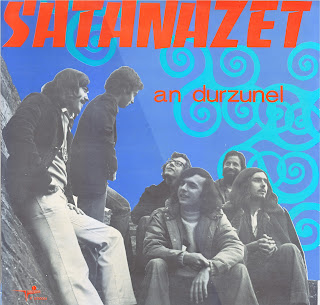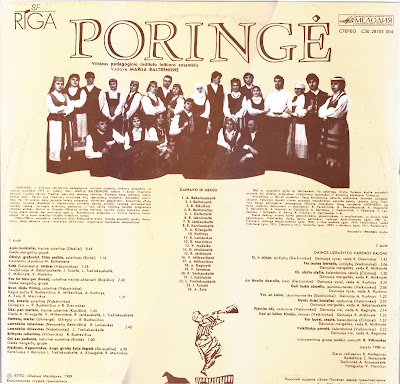A-BOUEZ-PENN GAND PJ. MOTREFF HA LOEIZ ROPARS
IN FULL VOICE WITH PJ. MOTREFF AND L. ROPARS
Coop Breizh, 1979, 1003
Loeiz Ropars was a very important man for the Breton revival. Everybody agrees that he was the ''inventor'' of what is called the fest-noz in its modern form. He became interested in the Breton singing tradition at the end of the thirties but mostly during the war because suddenly the old people with their culture were the only possibility of having some fun in the villages in a Brittany occupied by the Nazis. After the war he wanted to keep alive what he saw during the occupation and he managed to convince some singers to take part in kan ha diskan competitions. the in 1955 he organized the first modern fest-noz in Poullaouen ie an evening of songs and dances in a hall instead the yard of a farm, with a stage for the singers, one microphone and a entrance fee for the public. He was himself fluent in Breton of course and a fine singer. He died in 2007.
Among the old singers he used to visit and promote was PJ. Motreff born in 1899 in a family of singers. He started singing in 1910 with his mother. The area is what is called Haute-Cornouaille in French (Kernev in Breton) where singing is still very strong for dancing and other occasions. The kan ha diskan (the lead singer starts the first line when the second singer ''replies'' by singing the end of the first line before singing it himself and so on) is also possible outside of dance.
Here what is mentionned as being three different tracks on side A is in fact one track; this the traditional set called gavotte (gavotten or dans-tro in Breton) with the first chain dance followed by a ''bal'' to get some rest before the second chain dance. So there are three tracks on side A. The two other tracks are one song about the first world war (inside the trench) and a song about a murder that happened in the 17th century.
On side B four songs including one composition by Ropars ''Son ar Distrujer'' (song of the destroyer) telling us about all the destruction that was brought by the state in the sixties when the craze was to erase embankments in order to get bigger fields for a bigger production. Now the reverse movement has started after it was obvious that this ''remembrement'' killed local flora and fauna, caused big floodings and didn't help much the farmers in the end. Ropars was very active against such an ''economic progress''.
Text in French by Donatien Laurent, a famous scholar and musicians who died in 2020.




































